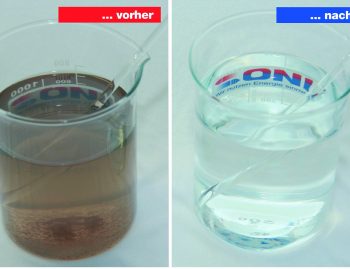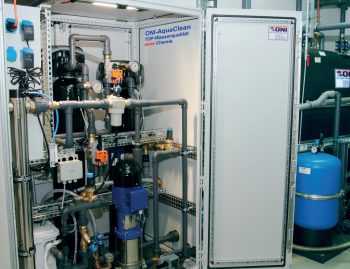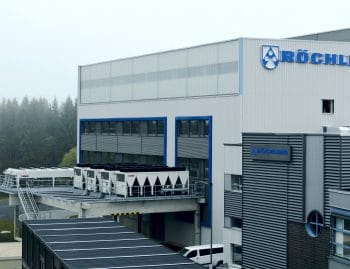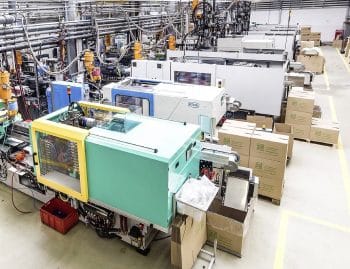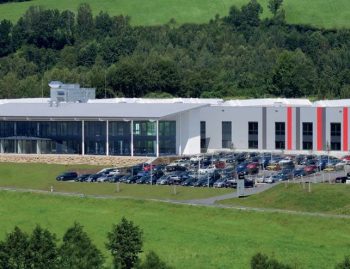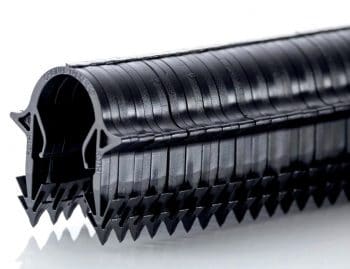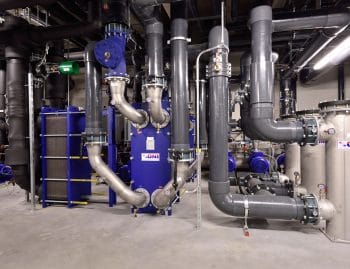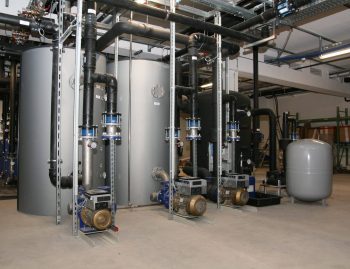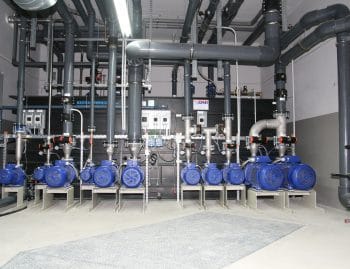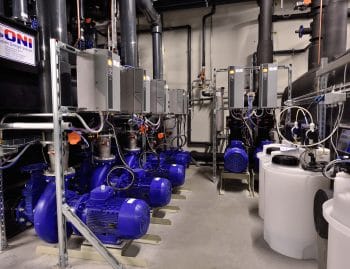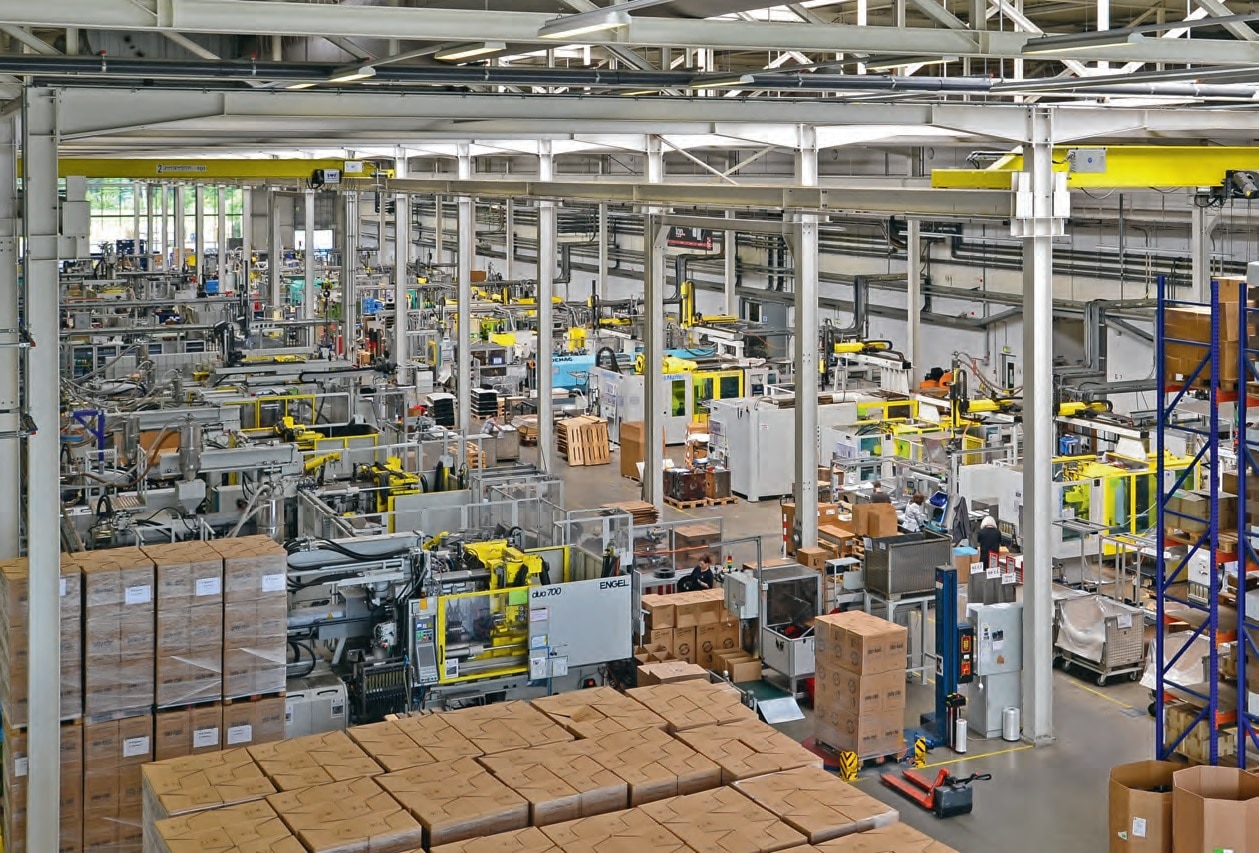
LKH Injection Moulding Technology Reduces Energy Consumption Sustainably
A few years ago, LKH Kunststoffwerk in Heiligenroth in the Westerwald region of Germany installed a completely new, modern injection moulding technology. A building block for the long-term assurance of efficiency and quality was and is a sustainable energy-saving concept that accompanies the expansion of production.
As a member of the Friedhelm Loh Group, which also includes Rittal, LKH produces complex and sophisticated plastic parts for electrical plant engineering at its plant near Montabaur. On the other hand, such parts and assemblies are developed and manufactured for the automotive industry, equipment manufacturers and other industries.
Rüdiger Braun, Head of Sales and Engineering, explains that with the move to the new plant a few years ago, the strategy has been geared even more clearly towards growth and concentration on components and assemblies with high know-how as well as high production efficiency. Accordingly, investments were made in modern injection molding machines, central material supply and energy-saving technology. An important component here is that the integrated concept of the Oni heat transformer makes cooling the injection molding machine hydraulics and injection molds considerably more cost-effective, and the waste heat is also used to heat a new logistics hall. Thomas Ritter, Head of Process Management, describes the influences of energy management on the quality of the injection molded parts as a positive "side effect": "The high performance of the cooling technology and the temperature constancy under all ambient conditions significantly support the quality and allow it to go to the limits of the processing window".
The approximately 50 injection moulding machines at the LKH plant with clamping forces between 250 and 16,000 kilonewtons are connected to two cooling circuits, one each for mould and machine cooling. The waste heat from the machine cooling circuit is used to heat the logistics hall. LKH uses all these components in the integrated energy-saving concept designed and implemented by Oni. Integrated into the control technology, Oni also has a refrigerating machine, which was already installed in a hall taken over and converted by LKH. It serves to secure the cooling capacity for particularly high requirements.
Saving energy step by step
LKH has geared its infrastructure to growth. Accordingly, the installed cooling capacity was also generously dimensioned. Nevertheless, the system is not oversized. Depending on the boundary conditions, the total energy consumption is always kept to a minimum with a high level of safety: During the colder seasons of the year, the two separate circuits for cooling machines and tools are recooled cost-effectively via idle free coolers. The hall heating system makes use of the waste heat from the machine cooling circuit, which is available free of charge. In the transition period with higher outside temperatures and correspondingly lower energy requirements for heating, the free coolers work for the machine cooling and the cooling machines for the tool cooling circuit. In summer, when outside temperatures are high, the free cooler for machine cooling is supported by adiabatic cooling and in extreme weather situations the chiller covers peak loads.
All system components are networked via a single controller. Depending on the need for cooling and heating as well as the ambient conditions, it ensures the optimum combination from a cost point of view. The control surface offers LKH the possibility of making adjustments and optimizations itself in the event of changed general conditions and with increasing operating experience.
Cost reduction and certification
Thomas Ritter "We know the energy consumption of our machines and systems very precisely through measurements and documentation," explains Thomas Ritter. "This is the only way to achieve a consistent cost calculation. Accordingly, we have repeatedly improved details such as the insulation of heating tapes". This cost transparency also enabled the realistic evaluation of the Oni project plan - and the verification of the predicted values during live operation. Above all, the heating of the spacious logistics hall to an average temperature of 18 to 20 degrees from the waste heat alone, even in the cold winters of the Westerwald forest, provides a high savings potential. In addition, slight improvements are possible again and again with the constant changes in the machinery. "With a view to the effects on part quality and specific energy consumption, we carry out minor optimizations ourselves, for example with regard to temperature settings," comments Thomas Ritter. "Energy recovery via the Oni system to reduce energy consumption also helped us with our ISO 50001 and ISO 14001 certification," explains Rüdiger Braun. Regular measurements on various machines and systems, such as the air-conditioning system, are used to calculate key figures in order to reduce specific energy consumption and implement new ideas in the future as well.
Conditioning plantsThe main focus was, for example, on the subsequent integration of a conditioning cabinet in which LKH processes polyamides for particularly high production requirements. This cost-effective possibility of quality improvement and assurance creates competitive advantages. According to Thomas Ritter, a few photos of the assembly situation were sufficient to obtain a conclusive concept for integration and the expected costs from Oni within one day.
Thanks to the implementation of all projects in the cost and time plan as well as the adherence to the values promised in the planning phase with regard to energy savings, Oni is also a potential partner for further projects.






